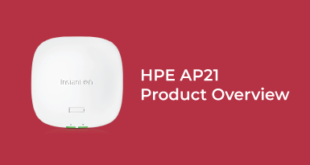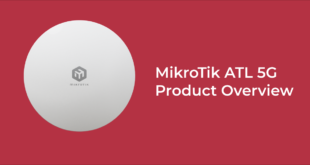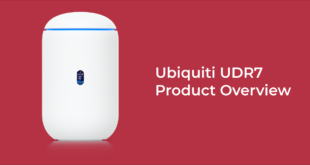Does this sound familiar?
“We have multiple internet lines to our office with some spare capacity and we want to sell internet services to our local area as we know they don’t have good internet from the xDSL mainstream providers. What items do we need to put such a system together? We have limited technical skills in this business, so if you could be very specific in the list of parts required and the trade costs for each item, that would be great!”
“We intend selling internet to our local town which is about 500 houses and we can get 8Mbps service on each of our 4 phone lines. Do you think that would be enough speed for those 500 users, i.e.32Mbps as I’ve been told we can get away with 50:1 contention which is the same that BT uses?”
“I have heard about bonding lines together, but on talking to our ISP they don’t know what we mean, so doubt they can do that themselves. Therefore can you also give us advice on a suitable device that can bond them together please and thus bypass our ISP as they can’t help us? I’ve read on their website that MikroTik can do bonding and can also be used for the core of a wireless ISP business, so that’s why we contacted yourselves.”
“We have now secured access to a roof top that can see the majority of the town, but we also want to feed some farms in the distance about 10km away. Although there are some trees and the odd building in the way, I can just about see the farms between all the obstructions, so the wireless should work fine shouldn’t it? I have read that 802.11n can work around corners, so it will work easily through just a few conifer trees, right? I will forward you some photos we took from the roof if that helps?”
“Our capital budget is only about £1000 for this project, which I reckon if we use MikroTik will be enough money to make it be successful. What are your thoughts? Don’t forget, we need a complete list of everything we need to order and how it all connects together, once we get that we’ll send you a bank transfer immediately!”
Anyone who has ever had any dealing with the Wireless ISP business and received that request will get an instant sinking feeling. They say they have no technical knowledge, they clearly have no experience of running a WISP, yet they suddenly think they can do all of that, just from being given a list of parts from ourselves. I reckon we get one of these types of requests every month in one form or another! The above example is un-typically detailed and is not what we normally get! Often they just send us an email with “I want to run a WISP from the roof of my house, what bits do I need?”
For those readers who are wondering what is wrong with the example question and would really like to know where to begin so that they can sell internet services to their neighbourhood (“for fun and profit!”) please read on!
Any business needs a back end office administration system. You need to be able to get money from the customers and associate it with their account. Sure you can manually go round to their house and unplug them from your network somehow if they refuse to pay up, but really you need something that is fully automated. The system needs to take their money and give them continued service every month, with no intervention from you, who is trying to run the WISP business. The most suitable solution is a server based on FreeRadius with a human friendly front end (there are a number of such systems, usually based on a web based PHP system) so that it can have customers log in, see the status of their account, make payments and allows you to see who is online and cut people off if needed 😉
Buying internet services from an ISP who primarily sell to retail users will not understand the more complex needs of a business re-selling their internet feed. They will not understand about bonding or even leased lines. They will likely be providing you with a single IP address that changes dynamically, every day or every time you reboot the ADSL router. Having 100+ customers on one external IP also means that any visits from Law Enforcement officers or the serving of Court Warrants will all arrive at your door, not those of your customers! One example problem is if you have one single person on your network that gets blacklisted by a website such as the National Lottery, then means no one on your network can log into their Lottery account anymore. Do you really want the hassle of dealing with that?
You’ll therefore need more than one single IP address for your internet feed. RIPE is fast running out of IPv4 IP addresses and are starting to make it more and more difficult to get blocks of IPs. If you need to supply 500+ customers, you will need to apply for what is called a “/22 block” which equates to 1024 IP addresses. It used to be the case that you could get these IPs directly from RIPE themselves by becoming an LIR, however due to the rationing that is now in place, RIPE have suspended anyone becoming an LIR to obtain IPv4 IP addresses. You will therefore have to get them from a pre-existing LIR member of RIPE. Most likely your ISP. If they do not even understand Bonding, good luck in trying to get them to “lease” you a /22 block of IP addresses.
Any technical experience you might be able to obtain from any local IT or computer expert will probably be from the world of office or corporate networking and not from running a ISP, especially not a Wireless based ISP. Designing a robust and reliable routable network is not as straightforward as it first appears. Based on the number of customers that have come to us to look at their single broadcast domain or ‘bridged’ network and identify why their clients are getting such slow speeds, proves that the majority haven’t designed their network correctly from the start. Migrating them from their small bridged network config to one that is scalable and works is always fraught with problems as customers will require to be disconnected while they are moved over to the ‘new network’ but it can be done. But, be aware that those clients have probably already suffered a long history of outages and slowness and they will likely consider this latest round of interruptions as yet another reason to leave your service and sign up with the competition. We have found that the break-point is somewhere around 300 customers and a bridged network then starts to suffer from meltdown no matter how many more radios you add to your radio site to feed all these new customers. In fact, adding more radios actually makes the problem worse.
You will also need to find someone from the Sky or TV Aerial trade to install your CPE (Client Premises Equipment) devices as they will have the necessary basic skills to climb a roof safely with the right tools and safety equipment. They will not initially understand the technology of how to point your CPE at your radio site and how to optimise and prove to a customer that it is all working correctly, so will require some basic training along with a laptop to connect the customer’s CPE to your radio network. They will also need to understand how to program up the authentication settings on the CPE and possibly also wire up a client’s Wireless Router in their house. So they also will need some basic IT skills. Or get trained up (but by whom?)
Now, let’s consider the radio spectrum we will use for this little venture. You will need to survey the local area and check that no one else is using the spectrum you have chosen to use for this venture. You’re not going to use 2.4GHz are you?! So, it’s either 5GHz or licensed spectrum. As you are trying to keep your costs down, I will assume you will be using 5GHz. As you will never “own” the spectrum, but it is actually a shared resource with everyone else in the area (who may be a competitor of yours!) you have to understand that you are basing your whole business plan on a radio system that if it all falls over due to interference, you are stuck and there is very little you can do about it. There is a very good reason why the larger corporate based WISPs use licensed spectrum, such as that at 3.5GHz. It is “theirs” and they can control the spectrum from interference. The radio side of the business no longer becomes such a major problem when you control it. But the “light regulation” of 5Ghz, means you don’t have much control. Therefore do not be surprised if one day in the future, you lose all your customers in a particular area and you find yourself relatively powerless to resolve it as struggle to find the cause of the interference. Some RF problems can take days to resolve. If you feel the need to bring in Ofcom, it may take months!
The 5GHz spectrum initially appears to be plentiful (especially if compared to 2.4GHz) and it does have a much larger number of channels available than 2.4GHz. However, if you then read into the small print of what is actually permitted to be used legally in the UK, it starts to diminish. First of all, there are three 5GHz radio bands. Fortunately and simply called Bands A, B and C. We can’t use Band A at all for our WISP. That is for indoor use only. As we will be installing 5GHz equipment on roof tops, for delivery of internet to other rooftops, that’s hardly “indoors”. So that’s one band gone already.
Then there is Band B. That is shared by the Meteorological Weather radars (and some other stuff like the Military) and when you have DFS enabled, you may find your Base Stations will constantly keep changing frequency.
Band C is only allowed to be used for outdoors links and in the UK, this band is allowed a much higher EiRP power (4W) which means this is used for the long distance backhaul links between buildings that interconnect all your sites together. However, right in the middle of Band C is a small segment of spectrum that Ofcom clearly states must not be used as it used by some protected legacy services that were there long before Wireless LAN devices used this 5GHz band. Therefore this limits us to approximately only two actual channels in Band C that can be used without breaking the IR2007 (Interface Requirement) that Ofcom publishes. (Ofcom’s IR2006 covers the usage of Bands A and B).
These restrictions on the use of 5GHz means you now have to do even more hard work and plan ahead to chose the best channels to use – or even if you have any free channels at all that are not already being used by others! Visit the site you wish to use. Perform a proper spectrum survey. We use one of these but you can also use other tools like the MetaGeeks Wi-Spy. It can be a bit like an MOT, the survey is only valid for the time when you do it. Come back a week later and the RF spectrum will have changed, but with a full survey before installing anything, you at least are then better informed of what you are going to find when you switch on your first customers and there is less chance of it being a complete failure.
As for the actual radio kit, you basically have a number of choices, depending on your budget and technical skills. If you just want “plug and play” and have limited skills, go with Ubiquiti every time. It is relatively easy to bolt together and the simple Web based GUI interface is a pleasure to use, especially for those users are more interested in getting something working, than getting dirty with dozens of technical settings and tweaking things for maximum performance.
Ubiquiti AirMax provide a scalable solution, which means if you have 10 people connected to a base station, or 50 people, they will still all get an equal slice of the total available bandwidth. The total throughput is typically around 75MBps. Therefore 10 clients would get about 7.5MBps each, even when every single customer is downloading at their highest possible. We find that most WISPs typically start looking to install more sectorial base stations when their current base station reaches around 15-20 clients. You may be tempted to consider that with contention, you can actually squeeze in more customers than that, or sell services such as “up to 75MBps” to every client. We’ve seen it done and it is quite simply flawed from the outset. These days, customers are using much more intense data downloads, such as video streaming. You only need a few customers watching YouTube every evening at Peak Time and it can bring your claims of “up to 75MBps” to it’s knees. it will be much more likely you will be getting “I am lucky if I get 1-2MBps” complaints. As always, it is always the customers that bad mouth you the loudest and in public (e.g. on Twitter, Facebook etc) that will give your service a bad name, even if they are in a minority). Sadly, the customers that are very happy will never publish the fact that they are! Therefore, do not try to squeeze too much out of a wireless delivered system and promise the earth before you’ve even got off the ground with a working and tested system!
MikroTik also offer a similar TDMA (Time Division Multiplex Access) based product as Ubiquiti AirMax, called NV2 (however they are not compatible with each other). NV2 from MikroTik however can deliver typical throughputs of 125MBps. So now, your 10 clients will get a larger amount of throughput than with AirMax. The downside is that the MikroTik equipment requires more technical skills to setup and get working really well. As the total throughput is greater, you can push back the time period to install secondary sectorial base station feeds to your clients, thus reducing your total running costs.
Regardless of the system chosen, Ubiquiti or MikroTik, it is important to ensure you shield your radio equipment properly. Much equipment comes these days in ABS plastic type boxes. These are easy to manufacture and thus there is a large selection of suitable housings available. If you are sharing your site with other WISPs, or you intend installing a number of base stations at one location, it is wise to plan ahead and install all metal enclosures. With Ubiquiti AirMax, they provide the Titanium range which ensures the radio and rear of the antennae are shielded, thus maximising the isolation between all the radios at your site. With MikroTik, we can provide you with metal enclosures to install the RouterBoards into thus ensuring the site is well protected from interference to/from yourself. MikroTik have announced a new product called the RB912G with a metal enclosed version following shortly after around May 2013.
This article hasn’t even touched on what type of CAT5 cabling you should use, or how you connect the radios back to your central backhaul. Nor has it examined how you power all the kit and ensure it keeps running, even when the mains is cut. How do you make the equipment notify you, if anything fails? Far better that you get told by the equipment and update your web site status page than have customers screaming at you? The list goes on.
So the next time you have a great idea that you can sail off to a retirement in the Bahamas, safe in the knowledge that you are selling internet to all your friends and neighbours and it is a really easy thing to do, pause and think again! Plan ahead. Document everything. Think about getting appropriate training on Ubiquiti or MikroTik. Naturally, you need to buy the right equipment and have it professionally installed by people who know what they are doing.
If you’re planning on rolling out a WISP in your local area – do let us know if you need any help before you roll out a network that becomes unsustainable or becomes unscalable; for you never know, your dream might indeed become a reality but you find your network grows much faster than you had ever hoped and you suddenly can’t cope with all the customers complaining of poor service! 🙂
 LinITX Blog Ubiquiti & MikroTik Wireless Networking Experts
LinITX Blog Ubiquiti & MikroTik Wireless Networking Experts





Very good points, enjoyed the read
Ha ha! This reads like the story of my life from 2007-2011! Local hilltop, bridged network, minimal networking chops, scaling problems, the works! But I kept at it, got training, and am now comfortably providing for households in over 100 square miles of cable- and DSL-free rural USA. Plus, I was mentored by an extremely kind “affiliate” WISP operator in a neighboring territory, who provided me raw bandwidth, billing, and merchant services until I could afford my own.
One point you don’t mention is that most high-speed providers (at least in the USA) sign you to a contract that forbids you to resell their service, so that motive is right out. You discover quickly that the $60/month you pay for your 20Mbps residential DSL line zooms to four figures if you want resale rights.
Wonderful explanation of the basics of Wisp setup. But still it would be great if you can share the other required hardware, software and options available for them.
LOL. Whah?? I know this is old but you should really talk to a consultant and pay them. They deserve to be paid sometimes. Then again some don’t mind and will let you know.